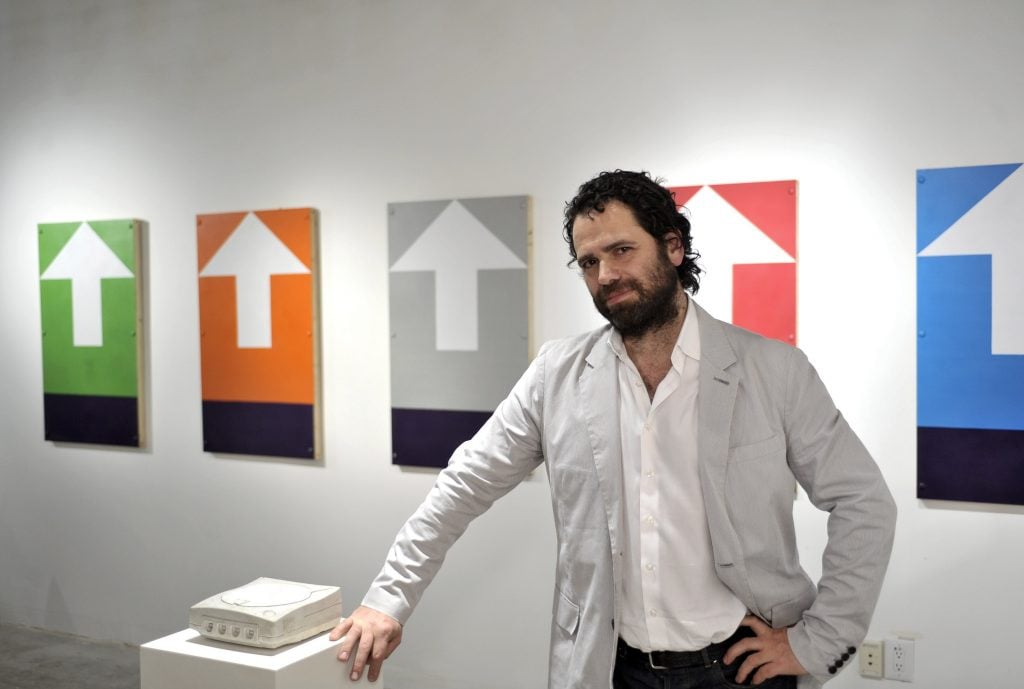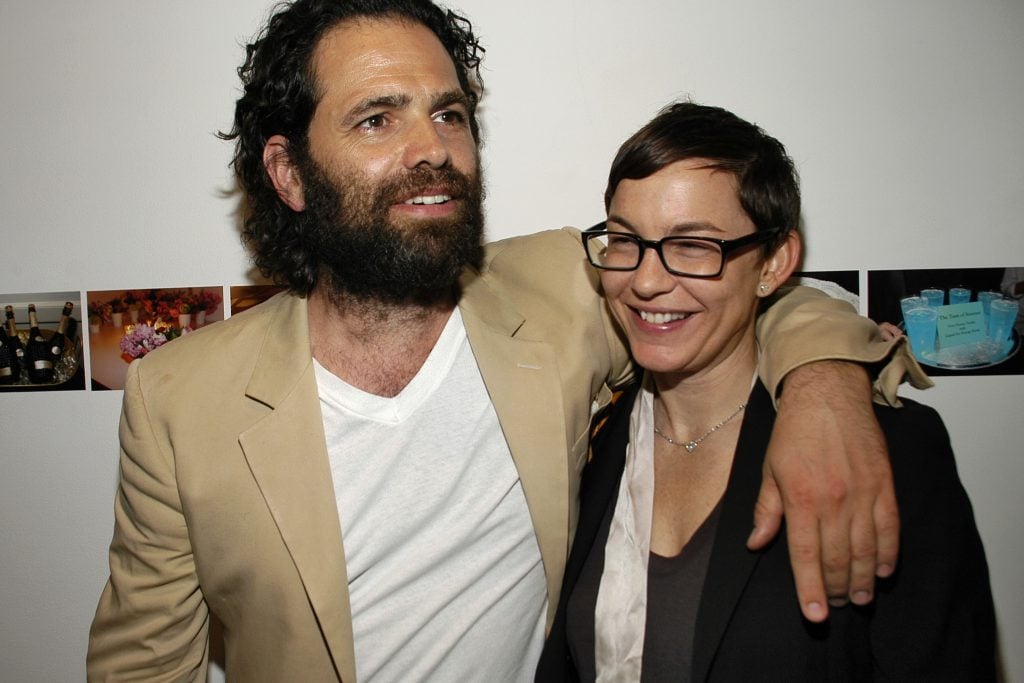Galleries
‘A Resource for Young Minds’: Dealer Gavin Brown on Why He’s Donating His Archives to Bard
While the dealer can find himself getting sentimental, he’ll leave it to others to assess the gallery’s place in history.

For a generation of New York gallery-goers (not to mention fairgoers internationally), Gavin Brown’s gallery—branded Gavin Brown’s Enterprise—was a vital ingredient in the soup. He showed essential artists ranging from Joan Jonas and Alex Katz to Arthur Jafa and Rirkrit Tiravanija. (In the latter case, the soup was literal, as the artist handed it out to visitors in a key example of what would come to be called relational aesthetics.)
I’ll never forget when Urs Fischer dug an eight-feet-deep hole in the gallery that extended some 38 feet across. When he lost a space on 15th Street in 2015, he memorably revived a presentation of a Jannis Kounellis piece in which a squad of horses were parked in the gallery, munching hay and snorting. When he premiered Arthur Jafa’s video Love is the Message, the Message Is Death just days after the election of Donald J. Trump in 2016, it became a place for the art community to mourn.
The gallery operated for some 26 years across locations on Broome Street in SoHo, 15th Street in the Meatpacking District (where a neighboring bar, Passerby, featured a light-up floor by Piotr Uklański and was a key art-world watering hole), to the West Village, and finally to Harlem. He ultimately joined Barbara Gladstone’s globe-spanning gallery as a partner in 2020.
Now, the records behind many of those unforgettable exhibitions have found a new home, as Brown is donating the gallery’s archives to the Center for Curatorial Studies at Bard College, in Annandale-on-Hudson, New York, a short trip north of where the gallery once stood.
“Gavin Brown’s Enterprise was as much a social space as an influential pillar of the commercial gallery world, and it remains a key touchstone for independent representation within the arts community,” said Tom Eccles, executive director of CCS Bard. “The archives preserve and make public a dynamic history of a space known for challenging convention and for dynamic exhibition-making.”
The center serves students in the graduate program, who are an influential bunch; the program has sent many notable graduates into the gallery and museum world, such as Carla Acevedo-Yates, Cecilia Allemani, Anne Ellegood, Sofía Hernández Chong Cuy, Ruba Katrib, Denise Markonish, and Tobias Ostrander.
We spoke to the dealer about feeling sentimental, how the gallery will live on, and what future scholars might find in those boxes.

Gavin Brown and Elizabeth Peyton attend the PatrickMcMullan.com (WHO AM I?) reception at Gavin Brown Gallery in New York City, 2017. Photo: Patrick McMullan via Getty Images.
How did you come to settle on Bard, when your records could have gone to, say, the Archives of American Art or a university that would have been happy to have them?
I’m totally ignorant about these things. Tom asked, and no one else did. CCS does an amazing job. I like the idea of it being a resource for young minds that are thinking about art. It gives the gallery and its history some longevity. It’s carried on in the nervous system of these kids. And I think there’s something powerful about what they do. They’re the new Peace Corps, spreading the word of art around the world. Politics has now become so vacant and empty that no one wants to go into politics, so maybe even if not as a career, they want to go into art as a way to understand the world and our life.
Does it feel strange to donate the archives while you’re still living, breathing, and doing business, when it’s such a retrospective gesture?
No, I feel much lighter because of it, to be honest with you. I’ve moved on from that chapter, from that volume.
On the other hand, I also feel a mania or collective pathology of trying to stop time and contain everything is… I don’t know… not that I have trouble looking back. I can find myself feeling very nostalgic and sentimental. I have a tendency to revisit locations. I drive past the Greenwich Street location or cycle past the 15th Street location. But all that other stuff about how people look at it in terms of academics or being part of history, that’s for other people to think about. My memory’s so bad, I’ve forgotten so much anyway.
But I don’t want to be blasé about it. I’m extremely proud, and it feels good that it’s with a friend and I hope it’s useful.
Have you taken a close look over the archives in preparation for this move? If so, was there anything surprising in there?
No, all the boxes were in storage and I gave them the key and they went and got it. After everything went digital, we changed our server at some point and lost a whole lot of stuff. So, the post-digital years are perhaps a bit thin but that’s just my own anxiety. What’s in there? It goes from the minutiae to financial records—which is frightening in itself. I guess it’s just the stream-of-consciousness diary of an institution. Well, not that the gallery became an institution. A thing.





